
The Northrop GrummanEA-6B Prowler is a twin-engine, four-seat, mid-wing electronic-warfare aircraft derived from the A-6 Intruder airframe. The EA-6A was the initial electronic warfare version of the A-6 used by the United States Marine Corps and United States Navy; it was used during the Vietnam War. Development on the more advanced EA-6B began in 1966. An EA-6B aircrew consisted of one pilot and three Electronic Countermeasures Officers, though it was not uncommon for only two ECMOs to be used on missions. It was capable of carrying and firing anti-radiation missiles (ARMs), such as the AGM-88 HARM.

Naval Air Station Whidbey Island (NASWI) is a naval air station of the United States Navy located on two pieces of land near Oak Harbor, on Whidbey Island, in Island County, Washington.

Electronic Attack Squadron 129 (VAQ-129) is the United States Navy's only EA-18G Growler training squadron. Known as the "Vikings", they are a Fleet Replacement Squadron, or FRS, and are charged with training all EA-18G aviators and developing standard operating procedures for the maintenance and operation of the aircraft. The squadron is permanently stationed at Naval Air Station Whidbey Island, in Puget Sound, Washington.

{{Collapse/sandbox|
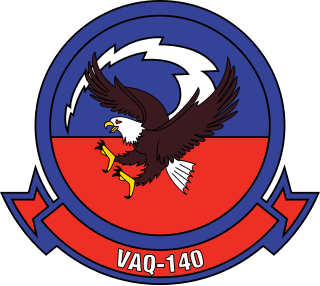
Electromagnetic Attack Squadron ONE FOUR ZERO (VAQ-140) is a US Navy electromagnetic attack squadron. Known as the "Patriots", the squadron operates the EA-18G Growler. The squadron is home ported at NAS Whidbey Island, Washington. They are attached to Carrier Air Wing Seven, and deploy aboard USS George H W Bush. The squadron's radio callsign is "Talon" and are formally recognized as America's Squadron. Their aircrew commonly reference the rallying cry of "Glizzy Roll" in honor of their traditional ready room hot dog roller. Their mascot is their newest aircrew dressing as Evel Knievel.
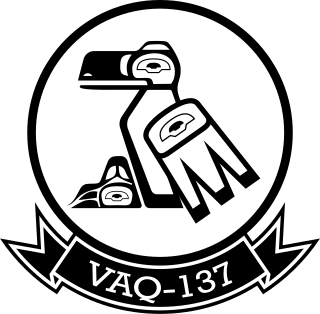
Electromagnetic Attack Squadron 137 (VAQ-137) also known as the "Rooks", is a United States Navy electromagnetic attack squadron based at Naval Air Station Whidbey Island Washington, flying the Boeing EA-18G Growler. The squadron is attached to Carrier Air Wing 11 (CVW-11), which is currently assigned to USS Theodore Roosevelt (CVN-71). Their radio callsign is "Rook" and their tailcode is "NH" of CVW-11.
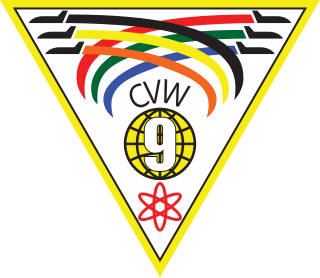
Carrier Air Wing Nine (CVW-9) is a United States Navy aircraft carrier air wing based at Naval Air Station Lemoore. The Air Wing is currently assigned to the aircraft carrier USS Abraham Lincoln (CVN-72). The Tail Code of aircraft assigned to CVW-9 is NG.
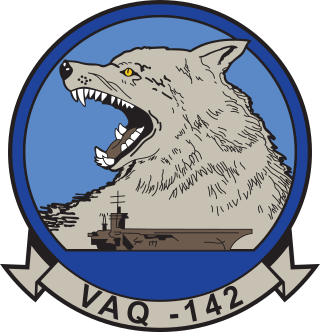
Electromagnetic Attack Squadron 142 (VAQ-142), also known as "The Gray Wolves", is an EA-18G Growler squadron of the United States Navy stationed at Naval Air Station Whidbey Island, Oak Harbor, Washington. Their tailcode is AJ and their ATC callsign is "GRIM".
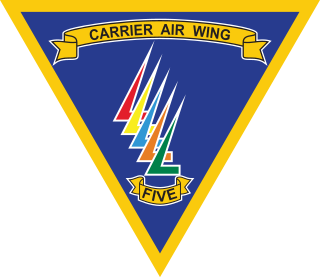
Carrier Air Wing Five (CVW-5) is a United States Navy aircraft carrier air wing based at Marine Corps Air Station Iwakuni. The air wing is attached to the aircraft carrier USS Ronald Reagan. It was initially formed in 1943. It has participated in the Second World War, the Korean War, the Gulf War, Operation Southern Watch, the War in Afghanistan, and the War in Iraq.
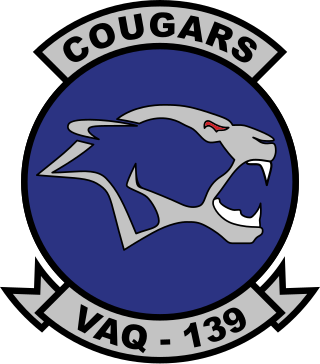
Electromagnetic Attack Squadron 139 (VAQ-139), also known as the "Cougars", is an EA-18G Growler squadron of the United States Navy. They specialize in electromagnetic attack and are currently stationed at Naval Air Station Whidbey Island, Washington. Part of Carrier Air Wing Seventeen, the Cougars deploy aboard the aircraft carrier USS Nimitz

The 390th Electronic Combat Squadron is a United States Air Force unit. It is assigned to the 366th Fighter Wing at Mountain Home Air Force Base, Idaho and stationed at Naval Air Station Whidbey Island, Washington.

Electronic Attack Squadron 209 (VAQ-209) is a United States Navy Reserve electromagnetic attack squadron. Known as the "Star Warriors", the squadron flies the EA-18G Growler carrier-based electronic warfare jet aircraft. It is assigned to the Tactical Support Wing and based at Naval Air Station Whidbey Island, Washington. Its mission is: "To safely train to attain and maintain mobilization readiness for immediate employment in event of war or national emergency."
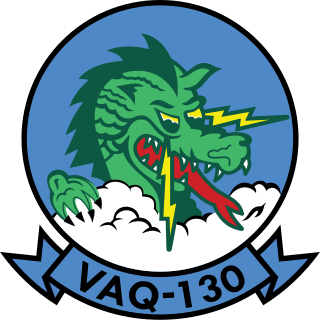
Electromagnetic Attack Squadron 130 (VAQ-130), also known as the "Zappers", is an EA-18G Growler squadron of the United States Navy based aboard Naval Air Station Whidbey Island. Part of Carrier Air Wing 3, the Zappers deploy aboard the aircraft carrier USS Dwight D. Eisenhower. VAQ-130 is the oldest electromagnetic warfare squadron in the U.S. Navy.
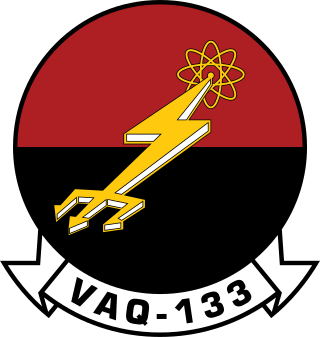
Electromagnetic Attack Squadron 133 (VAQ-133) is an EA-18G Growler squadron of the United States Navy based at Naval Air Station Whidbey Island, Washington. Beginning in 2013, the squadron began the transition from the EA-6B to the EA-18G. Upon completion of the transition in spring of 2014, they returned to their attachment to Carrier Air Wing Nine. The squadron's nickname is "Wizards" and its radio callsign is "Magic".
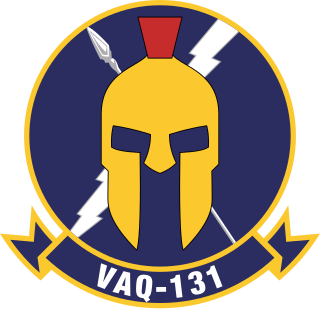
Electromagnetic Attack Squadron 131 (VAQ-131), also known as the "Lancers," is a United States Navy tactical jet aircraft squadron specializing in kinetic and non-kinetic Suppression of Enemy Air Defenses (SEAD). They are based at Naval Air Station Whidbey Island, flying the EA-18G Growler. Their radio callsign is "Skybolt."
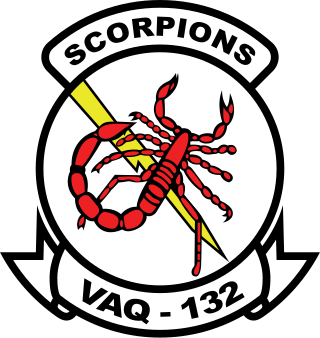
Electromagnetic Attack Squadron 132 (VAQ-132), the "Scorpions", is a United States Navy aircraft squadron based at Naval Air Station Whidbey Island, flying the EA-18G Growler. The squadron's radio callsign is "Scorp".
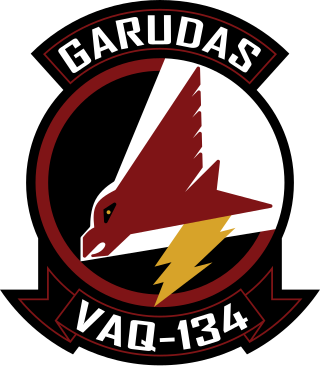
Electronic Attack Squadron 134 (VAQ-134) is an electromagnetic warfare squadron of the United States Navy. It is nicknamed "Garudas" and is based at Naval Air Station Whidbey Island, Washington. The squadron is currently equipped with the Boeing EA-18G Growler.
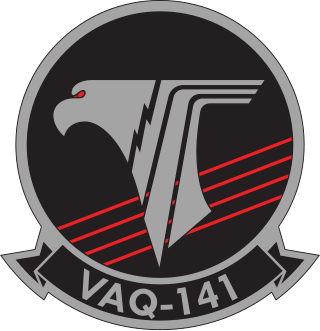
Electromagnetic Attack Squadron 141 (VAQ-141), also known as the "Shadowhawks", is an EA-18G Growler squadron of the United States Navy that is based at Marine Corps Air Station Iwakuni, located in Iwakuni, Yamaguchi, Japan. VAQ-141 falls under the cognizance of Commander, Electromagnetic Attack Wing Pacific (COMVAQWINGPAC) and flies in support of Carrier Air Wing 5 (CVW-5) aboard the Nimitz-class aircraft carrier, USS Ronald Reagan (CVN-76).
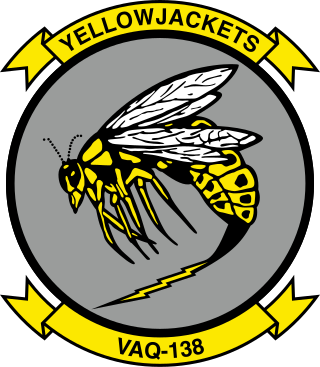
Electronic Attack Squadron 138 (VAQ-138), also known as the "Yellow Jackets", is an expeditionary EA-18G Growler squadron of the United States Navy based at Naval Air Station Whidbey Island, Washington.
In 1989, the United States Navy was on the verge of massive cuts to military spending cuts including ship and aircraft procurement. These forces were expected to fight the Soviet Union, Warsaw Pact and other potential adversaries in case of a war breaking out. At this time, the USS Kitty Hawk (CV-63) of the Pacific Fleet was out of commission for Service Life Extension Program (SLEP) modernization leaving the 3rd Fleet with less carriers.
























